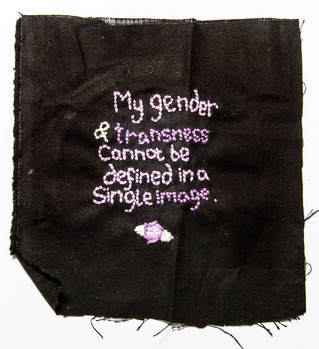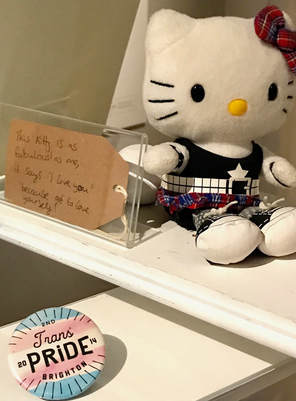 The Museum of Transology is a wonderful encouraging initiative. It is hosted by Brighton Museums in England (at least until April 2019) and includes a wide range of artefacts, photos and video material, amounting to the largest collection representing transgender people in the world. Crucially this representation from trans people themselves, emerging from trans community members in Brighton. This makes a vital difference. For too much of what is produced representing trans people, even by sympathetic allies (even sometimes LGB ones) falls short or distorts the realities of trans lives and issues. Admittedly things are continuing to improve in many quarters. Led by groups such as the fashion industry, a gradual increase in public representation is occurring (both in numbers and variety of trans people). Occasionally a trans person, rather than cisgender celebrity, is also now actually chosen to play a trans part in a production. Yet trans people are still spoken about, objectified in extraordinary ways, and not allowed to represent ourselves in so many places and critical debates. Museums have similarly typically colluded with this silencing, exoticising and obscuring, where they have considered trans people at all. In contrast, with great credit to Brighton, the Museum of Transology offers a hugely welcome breakthrough of authenticity, identity and ownership...  For a trans person, an exhibition like that of the Museum of Transology is certainly typically a moving experience. It also appears to be illuminating, entertaining and transforming of understanding for others too. After all, much about us has been shared in whispers which have become terrible 'Chinese whispers' in so many cases. Of course there is more to be explored, but the Museum of Transology's strength is that of the lived experience of its varied trans contributors. These contributions range from the poignantly humdrum to the powerfully articulate, from comfort to challenge, from information to inspiration, with much humour and creativity thrown in. Significantly they thus include everyday elements and small features of trans life which are so easily passed over by the cisgender gaze but which are so profoundly redolent of what it can mean to be transgender and which strike right to the heart of our pain and pride, our hopes and frustrations, and our distinctive struggles and remarkable strengths: little things, like the small cuddly Little Pony signifying the way one person coped with their dysphoria and stayed alive as a child (with which I strongly identify); what I would call a 'cabinet of healing and hope', filled with the wide range of hormone artefacts down the years; the various trappings of a trans man's surgery; the creative affirmative t-shirts and badges; the first (gold) handbag (which helped 'not to hear the abuse in the streets', or 'see the attacks', but 'just felt my joy as I danced and lived for the first time'),; the cuddly kitten (with the hard-won encouragement: 'this kitty is as fabulous as me, it says 'I love you' because you've got to love yourself'; pictures and stories; professional production and art; and other deeply resonating representations of our fears and our faces, our despair and delight, our wonderful wit and wisdom. Thank you Brighton - there should be a Museum of Transology in every good city! (what do you say Brisbane?...) for more information about the Museum of Transology, check out the Brisbane Musuems page (with links) about it.
0 Comments
Leave a Reply. |
AuthorThe Revd Dr Jo Inkpin: Archives
March 2024
Categories
All
|
 RSS Feed
RSS Feed